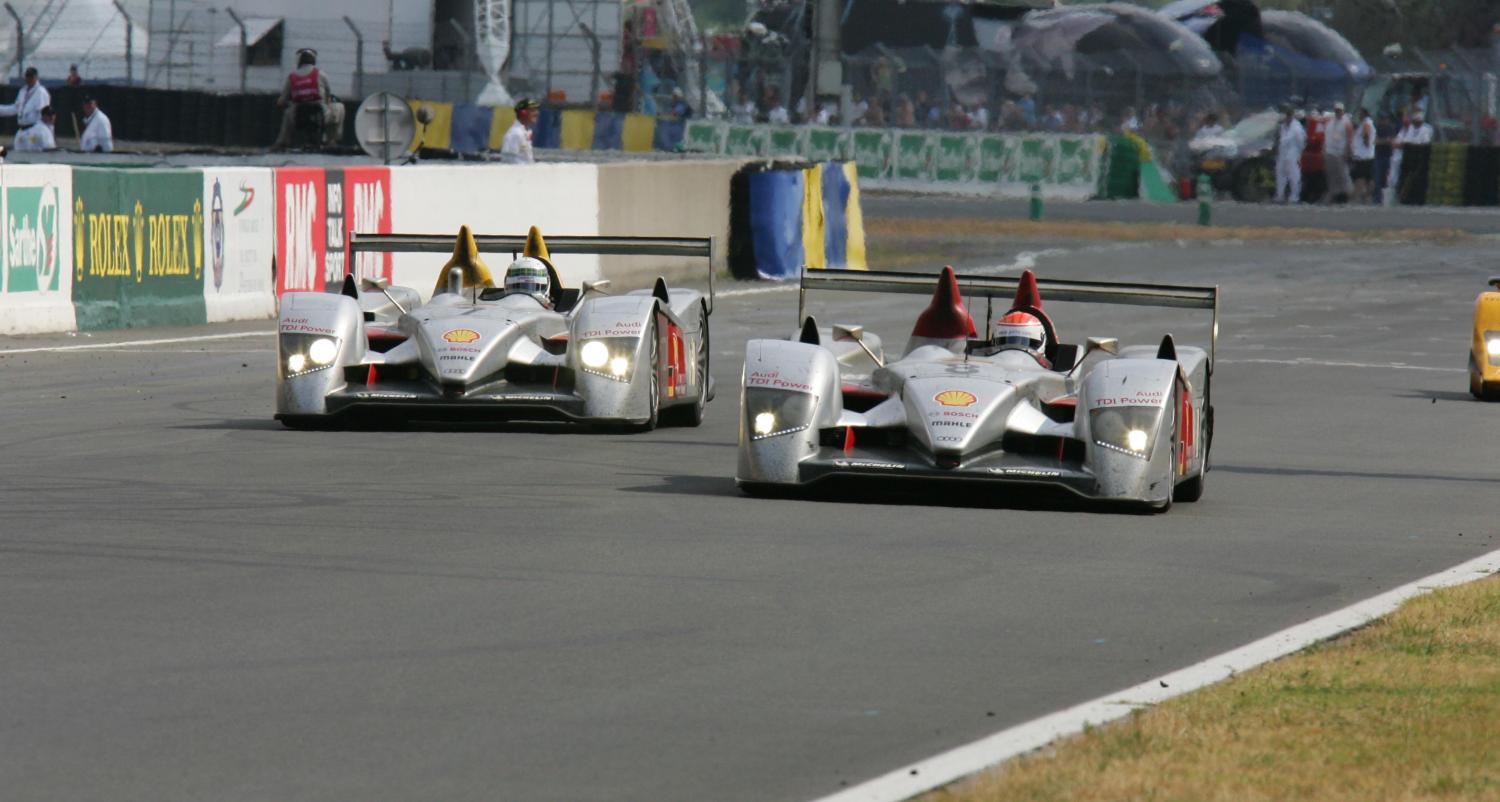The LMP1 class made its first appearance at the 24 Hours of Le Mans in 2004, with 19 cars fielded: the Audi R8, Pescarolo C60, Dome S101, Lister Storm LMP, Dallara SP1, Nasamax DM 139, MG-Lola EX257, Zytek 04S, Reynard 2KQ and Lola B01/60. In the end, the Audi R8 of Japanese team Audi Sport Japan Team Goh driven by Seiji Ara, Rinaldo Capello and Tom Kristensen became the first LMP1 to win the 24 Hours of Le Mans.
Nasamax DM 139 (2004)
After a first attempt in 2003 with a Reynard whose engine (a Cosworth turbo V8 derived from Formula Indy single-seaters) ran on corn alcohol fuel, Team Nasamax returned to Le Mans the following year with an identical project in principle but completely revised in substance. The Nasamax DM 139 was the only LMP1 compliant with the new FISA-ACO regulations (symmetrical arch, dual bumps on the bonnet, flat undercarriage, rear spoiler, etc.). The fuel for that effort was bioethanol made from pure alcohol distilled from potatoes or sugar beets, and the engine an atmospheric V10 Judd. Entrusted to drivers Robbie Stirling, Werner Lupberger and Kevin McGarity, the car finished 17th overall and sixth in the LMP1 class.
Lola B2K/10 Taurus Sport Racing (2004)
After WWII, the Delettrez brothers and driver-mechanic Fernand Lacour attempted to demonstrate the advantages of diesel fuel, but with little success. In 2004, the Taurus Sports Racing team took up the challenge with a Lola B2K/10 chassis in which was grafted a Volkswagen Touareg engine with the backing of Caterpillar (a U.S. industrial group producer of machinery in the fields of construction, mining and forestry). The car was forced to retire with a broken suspension five hours into the race.
Pescarolo C60 Hybrid (2005 and 2006)
Four-time Le Mans winner Henri Pescarolo, and his team Pescarolo Sport, was a major player in the LMP1 class. The most iconic car of that era was undoubtedly the Pescarolo C60 Hybrid. Fielded in the 24 Hours in 2005 and 2006, the open prototype was equipped with a Judd GV5 engine. In 2006, two of the cars took the start, one of which was driven by nine-time World Rally Championship winner Sébastien Loeb. The car earned Pescarolo Sport pole position in 2005 and a second place finish in 2005 and 2006.
Audi R10 TDi (2006)
In 2006, after selling its Audi R8 to private teams, the marque decided to make its official return to competition with the new R10 TDi. The Joest Racing team represented the German manufacturer in its bid to win the 24 Hours of Le Mans, and for the first time with a diesel engine. Audi pulled off a miracle, winning the race in first attempt with the new prototype, and repeating the feat in 2007 and 2008.
Winners with the Audi R0 TDi
- Emanuele Pirro, Frank Biela, Marco Werner in 2006 and 2007
- Rinaldo Capello, Tom Kristensen, Allan McNish in 2008







